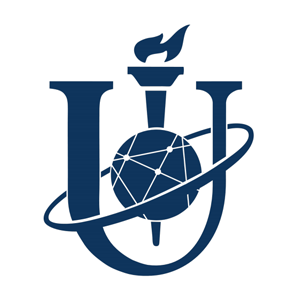COVID-2019 pandemic forced many Ukrainian higher educational institutions to switch from conventional face-to-face learning to distance or mixed learning. The russian invasion now continues to cause this effect on Ukraine, and not only forced students to keep out of universities and continue distance learning but also caused an outflow of qualified personnel out of the country. It created an urgent need to develop innovative educational instruments that effectively promote principles of immersive learning and collaborative creation of education scenarios across the Ukrainian student body and help keep the education quality and academic integrity up to a high standard.
Students, like other young people, are addicted to their gadgets. Millennials spend an average of 2.5 hours on social media; according to other sources, teenagers use an average of nine hours of entertainment media per day and spend nine hours a day with digital technology. Thus, effective self-learning of students is also connected with gadgets. It is necessary to "immerse" students in an educational environment that fits their comfort zone. Although acquiring new skills is associated with leaving the comfort zone, the first step to it is precisely in line with young people's gadgets. In addition, under lockdown conditions, the role of gadgets in the educational process has increased significantly. Gadgets have turned from technical means of processing information into tools for obtaining the skills necessary for the "socio-economic" growth of the individual. The definition taken from ballotpedia.org should be considered the most accurate – "immersion learning refers to any education approach that teaches by placing a student directly in an environment". This definition significantly expands the range of "immersion" tools and does not exclude any approaches to the knowledge and skills transfer from the list of immersive technologies. This definition is not about tools but about approaches in which one can use any tools that are suitable for a particular situation.
The idea is to form a new paradigm of education by implementing active learning methods for academic integrity promotion to acquire new skills and design educational programs by "immersing" in the process of preparing, adjusting and implementing learning scenarios (collaborative preparation of educational scenarios). It will also be essential to explore the active role of students at the stage of "birth" and "culmination" of the scenario.
We propose the following classification of immersive education tools:
Three concepts will be applied within the framework of the idea.
- The concept of an Immersive Environment will not be limited to the accepted set of virtual and augmented reality tools, gamification, etc. The definition "Immersive Environment" describes an environment where every sense is called to participate" will be given a deeper meaning, which consists of the two-stage participation of every sense in forming an educational environment. The first stage is the actual development of immersive learning tools, and the second is testing these tools, including with every sense.
- The concept of Immersive Testing focuses on the possibility of finding emotional and physical bugs in the "functioning" of immersive learning tools for academic integrity promotion through various software optimization models.
- 3. The concept of Immersive Ecologies promotes the implementation of innovative immersive learning tools after testing them using behavioral reactions research.
The first concept relates to the environment, the second is about content, and the third refers to assessing its quality, identifying challenges and ways to overcome them.
These concepts will form a new environment: Immersive Environment Ecologies. This environment will be not only spatial but also continuous, ensuring the project's sustainability and the creation of a series of post-projects after the project's main goals have been achieved.
To describe the model of an immersive university, it is necessary to introduce some explanations:
- Immersive University is a part of “university in a gadget” concept. However, an immersive university in the gadget is not a guide app, but a set of tools like augmented reality apps, 360 video apps, VR supplements, necessary gaming mobile apps, etc.
- Immersive Learning Environment is part of the e-learning environment, not something that exists on its own. In addition, the Immersive Learning Environment goes beyond e-learning as the scenario of a practical case implementation can be realized in the real world.
- Immersive University is a set of tools and scenarios, but this does not mean that one needs to use all the tools at once.
Immersive university is not only the constructed worlds but also the methods based on which these worlds are constructed.
Immersive university in a gadget
Immersive university as an information system (component diagram)
Immersive university workflow incorporating behavioral analysis framework (component diagram)
Immersive worlds construction methods
Choosing an appropriate immersion instrument with a certain dimensionality (nD) might pose a challenge. One has to possess a methodology and equipment to evaluate the effectiveness of immersion tool and assess expediency of particular immersion tool implementation. One of the possible solutions to this challenge is to us behavioral studies engaging proper equipment and software. MIDIAS project uses Tobii Pro Nano eye-tracking for data collection. Stimulus presentation and data collection is controlled by iMotions 9.3 (software packages used: iMotions Module-CORE, iMotions Module - Screen-Based Eye Tracking, iMotions Module – GSR, Affectiva AFFDEX 5.1). Galvanic skin response and heart rate data is collected by Shimmer 3 GSR+ Kit. This combination allows to conduct full-scale behavioral studies and evaluate immersion instrument effectiveness.
Multimodal behavioral study design that can be used for assessment of immersive learning tool engagement level
Videos that allow to know more about MIDAS Project activities:
Educational crafting in a virtual environment: the case of Minecraft
Augmented Reality Book: Dialogue about Academic Integrity
Augmented Reality Posters: Academic Integrity Virtues
Behavioral Lab Experiments: MIDIAS Project
The project team has a scientific background, which forms the basis of the project. Among the articles on testing education quality assurance systems and the implementation of immersive technologies, the following should be highlighted:
- Artyukhov, A.; Volk, I.; Dluhopolskyi, O.; Mieszajkina, E.; Myśliwiecka, A. Immersive University Model: A Tool to Increase Higher Education Competitiveness. Sustainability 2023, 15, 7771. https://doi.org/10.3390/su15107771
- Volk I., Artyukhov A., Lyeonov S. Modeling of Information System for Blended Education Quality Assurance and Socio-Economic Impact / Proceedings - 16th International Conference on Advanced Trends in Radioelectronics, Telecommunications and Computer Engineering, TCSET 2022, 2022, pp. 590–593 https://ieeexplore.ieee.org/document/9766905
- Liubchak V.O., Zuban Y.O., Artyukhov A.E. Immersive learning technology for ensuring quality education: Ukrainian university case / CEUR Workshop Proceedings, 2022, 3085, pp. 336–354. http://ceur-ws.org/Vol-3085/paper12.pdf
- Zhylenko, T., Ivanov, V., Pavlenko, I., Martynova, N., Zuban, Y., Samokhvalov, D. (2022). Mobile Applications in Engineering Based on the Technology of Augmented Reality. In: Machado, J., Soares, F., Trojanowska, J., Yildirim, S. (eds) Innovations in Mechatronics Engineering. icieng 2021. Lecture Notes in Mechanical Engineering. Springer, Cham. https://doi.org/10.1007/978-3-030-79168-1_33
- Iatsyshyn, A.V., Kovach, V.O., Lyubchak, V.O., Zuban, Y.O., Piven, A.G., Sokolyuk, O.M., Iatsyshyn, A.V., Popov, O.O., Artemchuk, V.O. and Shyshkina, M.P., 2020. Application of augmented reality technologies for education projects preparation / CEUR Workshop Proceedings, 2020, 2643, pp. 134–160.
- Volk I., Artyukhov A., Vasylieva T., Hordiienko V. Quality of Education and Socio-Economic Development: Decision Making Approach for Assessing System Performance / 2021 IEEE 8th International Conference on Problems of Infocommunications, Science and Technology, PIC S and T 2021 - Proceedings, 2021, pp. 256–260. https://ieeexplore.ieee.org/document/9772207
- Artyukhov A., Volk I., Vasylieva T. A multi-layered DIKW framework in education quality assurance for ensuring economic sustainability / E3S Web of Conferences 307, 06005 (2021) https://www.e3s-conferences.org/articles/e3sconf/pdf/2021/83/e3sconf_dsdm2021_06005.pdf

 eng
eng  укр
укр 





